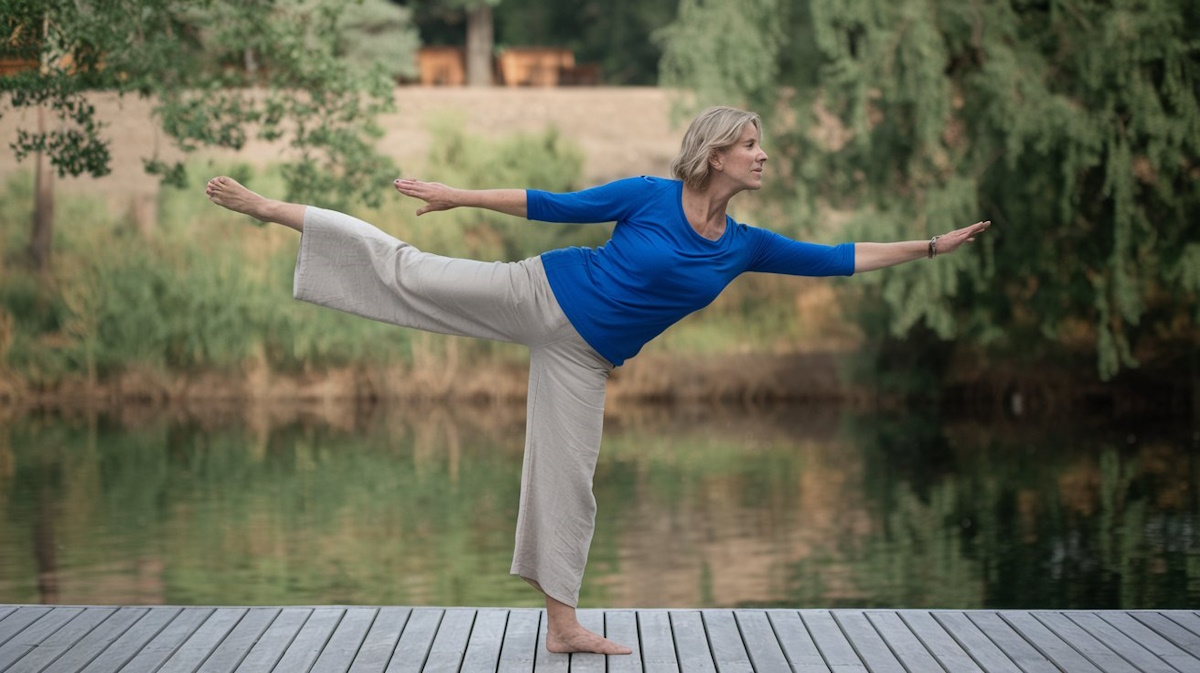New Study Reveals One-Leg Balance as Key Indicator of Aging
 Tech Artist
Tech Artist
A groundbreaking study published in PLOS ONE has uncovered that the ability to balance on one leg may be a crucial indicator of neuromuscular aging, with both men and women experiencing significant declines over the decades.
Researchers from Mayo Clinic conducted a cross-sectional study involving 40 healthy individuals over 50 years of age to investigate age-related changes in gait, balance, and strength parameters. The study aimed to compare the rates of decline associated with these factors and explore potential differences between men and women.
Key Findings
The most striking discovery was that unipedal stance time, or the ability to balance on one leg, showed the most significant change per decade compared to other factors examined. The non-dominant leg balance declined by 0.62 standard deviations per decade, while the dominant leg balance decreased by 0.53 standard deviations.
Dr. Aria Rezaei, the lead author of the study, emphasized the importance of this finding: “Our research indicates that the duration of unipedal balance is the most affected by age compared to other contributing factors we studied.”
Strength and Balance Declines
While one-leg balance showed the most dramatic decline, other parameters also exhibited age-related changes:
- Grip strength decreased by 0.34 standard deviations per decade
- Knee strength declined by 0.26 standard deviations per decade
- Bipedal balance, measured by center of pressure movement, increased by 6.3% per decade
Interestingly, the study found that gait parameters were not significantly affected by age, suggesting that walking ability may be preserved longer than balance and strength.
Gender Differences
The research revealed that sex differences were observed exclusively in strength parameters, with men showing 30% higher grip strength and 27% higher knee strength than women. However, there were no discernible differences between men and women in the decline of balance parameters.
Implications for Healthy Aging
These findings have significant implications for understanding the aging process and developing targeted interventions. Dr. Robert Pignolo, a co-author of the study, noted, “By identifying which aspects of physical function decline most rapidly with age, we can design more effective strategies to maintain independence and quality of life in older adults.”
The researchers suggest that healthcare professionals could use one-leg balance tests as a simple yet effective tool to assess neuromuscular aging. This could help in early identification of individuals at risk of falls and mobility issues.
Future Directions
While this study provides valuable insights, the authors acknowledge the need for further research. Longitudinal studies could offer more detailed information about how these parameters change over time in individuals. Additionally, investigating the effectiveness of targeted balance training programs could lead to practical interventions for maintaining physical function in older adults.
As the global population continues to age, understanding the nuances of physical decline becomes increasingly important. This study takes a significant step forward in identifying key indicators of aging, potentially paving the way for more personalized and effective approaches to healthy aging.
The research, conducted at Mayo Clinic’s Motion Analysis Laboratory, underscores the importance of comprehensive assessments in geriatric care. By considering multiple factors such as balance, strength, and gait, healthcare providers can develop more holistic strategies to support older adults in maintaining their independence and well-being.
Citations:
https://journals.plos.org/plosone/article?id=10.1371%2Fjournal.pone.0310764
Subscribe to my newsletter
Read articles from Tech Artist directly inside your inbox. Subscribe to the newsletter, and don't miss out.
Written by

Tech Artist
Tech Artist
No-code user